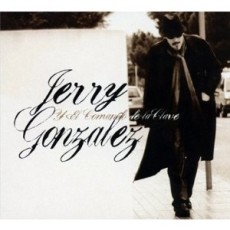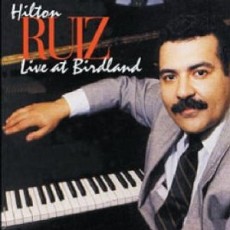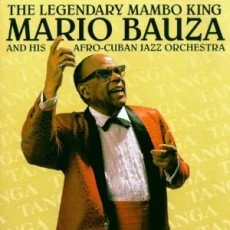
Daily Dose Of Jazz…
Jane Bunnett was born on October 22, 1956 in Toronto and began her musical educational as a classical pianist then switched to woodwinds at the Royal Conservatory. Inspired by Charles Mingus and Rahsaan Roland Kirk in 1979 San Francisco, she was studying jazz at York University. This led her to study with Barry Harris, James Newton, Frank Wess and James Moody and ultimately Steve Lacy in Paris in 1991.
Her debut recording “In Dew Time” featured an ambitious mix of Canadian and American players – pianist Don Pullen, tenor Dewey Redman and Vincent Chancy on French horn. This led to touring Canada and Australia and recording of her sophomore project a year later followed by two more by 1994.
Jane has become one of the foremost jazz musicians in Canada, and has gained recognition around the world for her improvising talents, technical proficiency, and writing and band leading abilities. She has received accolades and won awards from the Village Voice, SOCA, Downbeat Magazine, the National Jazz Awards of Canada, the Smithsonian Institute and the Jazz Journalist Association, her work has been nominated for several Grammy awards and received Canada’s highest award, the Order of Canada.
With sixteen albums under her belt, the saxophonist and outspoken humanitarian, Jane Bunnett continues to perform at jazz clubs, festivals, and concert halls and for broadcast throughout Canada, the United States, Europe, and Cuba, with her groups, and as a featured solo artist.
More Posts: saxophone

Daily Dose Of Jazz…
David Sanchez was born on September 3, 1968 in Guaynabo, Puerto Rico and from an early age took up the conga when he was eight His earliest influences were Afro-Caribbean, danza, European and Latin classical. By age 12 David began playing the saxophone, attending La Escuela Libre de Musica, which emphasized formal musical studies.
Around the time he turned 14 he heard Miles Davis’ Basic Miles and Billy Holiday’s Lady In Satin. A few years later faced with college he chose Rutgers over Berklee for a better scholarship and nearer to New York City. While at Rutgers he studied with Kenny Baron, Ted Dunbar and John Purcell.
After a period freelancing in New York with many top Latin players including Paquito D’Rivera and Claudio Roditi, Sanchez joined Dizzy Gillespie’s United Nations Orchestra in 1990 and Dizzy became his mentor. With Dizzy’s group he toured 27 countries and 100 U.S. cities in 31 states.
Leaving the United Nation Orchestra, Sanchez continued to play in Dizzy’s trio until Dizzy’s death in 1993. He has toured with the Philip Morris Superband, recorded with Slide Hampton and his Jazz Masters, Roy Hargrove, Kenny Drew Jr., Ryan Kisor, Danilo Perez, Rachel Z and Hilton Ruiz.
The tenor saxophonist is well known as a leader with seven albums under his belt for Columbia Records. He won a Grammy for the “Best Large Jazz Ensemble Album” in 2004 for Coral. David Sanchez continues to compose, record, perform and tour.
More Posts: saxophone

Daily Dose Of Jazz…
Jerry Gonzalez was born in the Bronx, New York City on June 5, 1949. Of Latin heritage, he grew up with jazz and Afro-Cuban music that left a deep impact on his musical appreciation. Listening to his father’s jazz collection he was influenced by Miles Davis, Dizzy Gillespie and Louis Armstrong along with gleaning inspiration from Tito Puente, Eddie Palmieri and Mongo Santamaria.
Studying music in junior high school, Gonzalez took up the trumpet and later the congas, continuing he formal training at New York College of Music and New York University. He began his professional career in 1963 playing with Lewellyn Mathews in New York State World’s Fair. In 1970 playing with Dizzy Gillespie, under whose tutelage he fused African based rhythms onto jazz elements seamlessly without detracting from either.
After playing with Manny Oquendo and Eddie Palmieri, Jerry created the Fort Apache Band with Andy Gonzalez (his brother), Larry Willis and Steve Berrios. A later reconfiguration and naming, Jerry Gonzalez & the Fort Apache Band became much more successful performing at European jazz festivals and subsequent recordings. Three albums later, “Rumba Para Monk” released in 1989, topped a readers’ poll in Down Beat magazine and was named the “Jazz Album Of The Year” in France by the Academie du Jazz. In 1998 they won both the industry and journalist polls in the New York Jazz Awards Latin Jazz category.
Gonzalez has played and/or collaborated with Tito Puente, McCoy Tyner, Jaco Pastorious, Chet Baker, Woody Shaw, Tony Williams, Larry Young, Freddie Hubbard, Chico O’Farill, Papo Vasquez, Ray Barretto, The Beach Boys, Chico Freeman and Paquito D’Rivera among others but his most noteworthy contribution is to Afro-Cuban jazz and a resurgence in Latin jazz in the 80s and 90s. With seventeen albums as a leader under his belt and a host of recording sessions as a sideman, since 2000, trumpeter Jerry Gonzalez has lived and played in and around jazz clubs in Madrid.

Daily Dose Of Jazz…
Hilton Ruiz was born in New York City on May 29, 1952 of Puerto Rican heritage. He began playing piano at the age of eight, and gigged with Freddie Hubbard and Joe Newman when he was young. Later, he was Rahsaan Roland Kirk’s main pianist from 1974 to 1977 and was featured on such records as The Case of the 3 Sided Dream in Audio Color and The Return of the 5000 Lb. Man.
Hilton recorded several solo albums between the 1980s and 2000s. On May 19, 2006, found unconscious on Bourbon Street in New Orleans, police concluded that he stumbled and fell and was not attacked. As a result of the accident, he remained in a coma until eventually passing away on June 6, 2006 at the age of 54.
Hilton Ruiz, jazz pianist steeped in Afro-Cuban music, was also a talented bebop musician.
More Posts: piano

Daily Dose Of Jazz…
Mario Bauzá was born on April 28, 1911 in Havana, Cuba and was classically trained. By age nine he was playing clarinet in the Havana Philharmonic Orchestra and would stay there for the next three years. In 1925 he ventured to New York to record with Maestro Antonio Maria Romeu’s band “Charanga Francesca”. He was fourteen. Five years later he returned to New York and reputedly learned to play trumpet in two weeks to become a part of the Don Azpiazu Orchestra.
Bauzá became lead trumpeter and musical director for Chick Webb’s Orchestra by 1933, and it was during his time with Webb that Bauzá both met fellow trumpeter Dizzy Gillespie and discovered and brought into the band singer Ella Fitzgerald. 1938 saw Bauzá joining Cab Calloway’s band, later convincing Calloway to hire Dizzy as well, with whom Bauzá would continue to collaborate even several years after he left Calloway’s band in 1940. The fusion of Bauzá’s Cuban musical heritage and Gillespie’s advancements in bebop eventually culminated in the development of cubop, one of the first forms of what is commonly referred to as Latin jazz.
Bauzá became musical director of Machito and his Afro-Cubans in 1941, a band led by his brother-in-law, Frank Grillo, also known as Machito, and in 1942 he brought a young timbales player named Tito Puente into the fold. For the next 30 years Bauzá remained director of the band up until 1976 where he began working sparingly leading his own Afro-Cuban orchestra through the eighties and into the early 90s, where his last band made a guest appearance on The Cosby Show.
Mario Bauzá, who died in New York City on July 11, 1993, was one of the first musicians to introduce Latin music to the United States by bringing Cuban musical styles into the New York jazz scene. He was one of the most influential figures in the development of Afro-Cuban music, and his innovative work and musical contributions have many jazz historians to call him the “Founding Father of Latin Jazz”.
More Posts: bandleader,clarinet,trumpet


